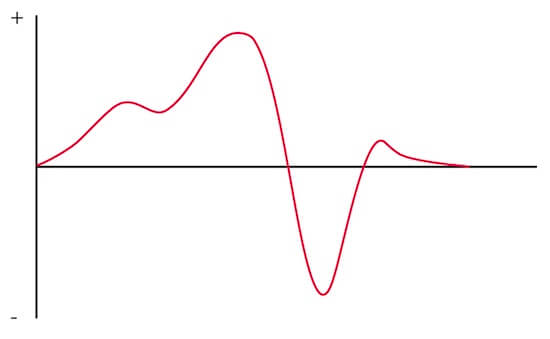
Facilitators often feel under pressure to “end on a high”. I firmly believe that this is the opposite of the best way to gain optimal value from a session.
Inspired by the wonderful Johnnie Moore today (see his guest appearance on the WhatComesNext.Live podcast here). The LinkedIn post below is a short walking and talking video he posted on “not ending on a high”. Do listen to it (only a little over two minutes) and recognise the mastery he exhibited in the example he gives around “managing the energy” when leading a group session.
My thoughts inspired by this follow after that post, do watch Johnnie first then come back to the post below.
Johnnie finished his post by noting that facilitators/group coaches often feel under pressure to “end on a high”. I firmly believe that this is the opposite of the best way to gain optimal value from a session, so I always, proactively, tell my clients that I will be running the “Energy Curve”, and then will draw or show them the diagramme at the top of this post.
There is much to note about applying the Energy Curve to a session (and happy to discuss further with anyone who would like to talk it through), but for today I simply ask you to look at the diagramme and note that the energy levels at the end of the session are brought back to exactly where they came into the start of the session. This is a conscious design and is done in order to avoid the “energy hangover” of “ending on a high”.
When you end “on a level”, you end with both clearer energy as well as with a far higher likelihood to embed and embody the learnings from the session and to commit to what comes next after the session.
What is an “energy hangover” though? A few examples to illustrate:.
- I’ve seen people go to religious revival meetings. These are designed to whip people up into a fervour so that at the end they want to be “saved”, and to join that movement. In every case I’ve known, though, they wake up the next morning feeling let down, as if the energy has “popped” like a rapidly deflating balloon.
- Tony Robbins. He, similarly, carefully designs such rabid fervour into his sessions leading up to the famous “firewall”. The thing is, almost everybody who has been to one of those sessions feels they need to pay for another one within a year or so in order to recapture that feeling as it fades. That “dependence” is by design as it forms part of his commercial model.
- Rock concerts. They always end on a high, an encore with a loud and big number. They are great, and at the same time, they leave you (again by design) wanting to come back and see the band again soon. Again, by design.
When we avoid the “energy hangover” by leaving people “on a level”, this works far better to create value for the client.
When I work with a client I may be entertaining at times, but they don’t bring me in for that, I am there to help them drive value for their organisation. For sure I am not there to “leave them on a high”
